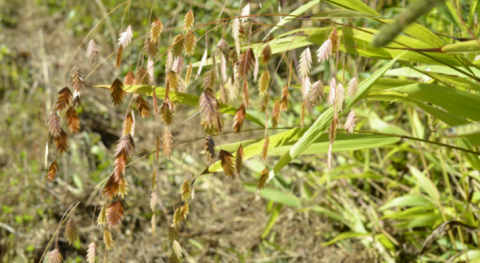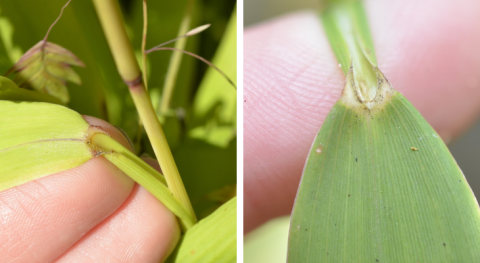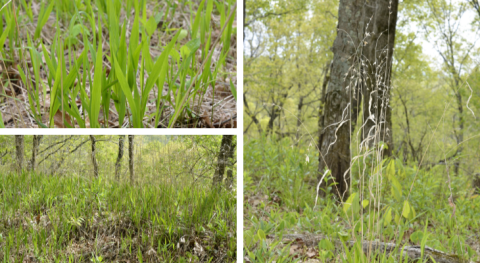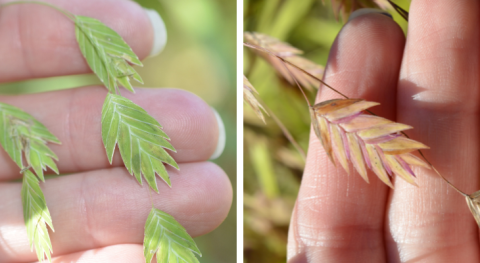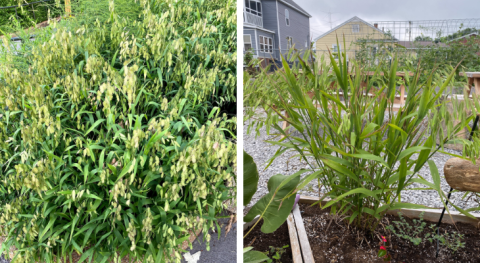River Oats
Add sound to your sensory space.
Finding plants for a sound garden is challenging, but native grass River Oats, Chasmanthium latifolium, creates a pleasant rustling sound when a breeze flows through the leaves.
River Oats has many common names including Inland Sea Oats and Wild Oats. This grass grows in bottomland forests, on the edges of lakes, and in full sun and is increasingly planted ornamentally. This grass is very adaptable to different growing conditions and grows naturally in the southern half of Illinois.
Vegetative traits
Once you learn its characteristics, this grass will stand out from the crowd. It usually grows between 2 and 4 feet tall. Its leaves are rather broad, up to an inch across in width. They remain broad and then taper sharply to a point. There is a ligule, and it is made up of short hairs.
When the new growth emerges in the spring, look for bright green and broad leaves. Last year’s inflorescence usually remains into the spring, so look for tan, flattened spikelets held on stems above the fresh leaves.
Unique spikelets
The panicle produced by this grass droops, and the spikelets are very unique. They are extremely flat, oat-like spikelets. They rustle pleasantly in the wind. Starting out green, they will turn golden with age in the fall, one of the reasons this grass is used in landscaping.
Cultivation tips
A word of caution – this grass spreads through rhizomes and can be aggressive. It will also reseed itself. It is sometimes part of stunning landscape at zoos with strongly edged planters (below left). If you want this grass in your landscaping, separate it off from other areas of your garden, as shown in this sensory garden raised bed (below right).
